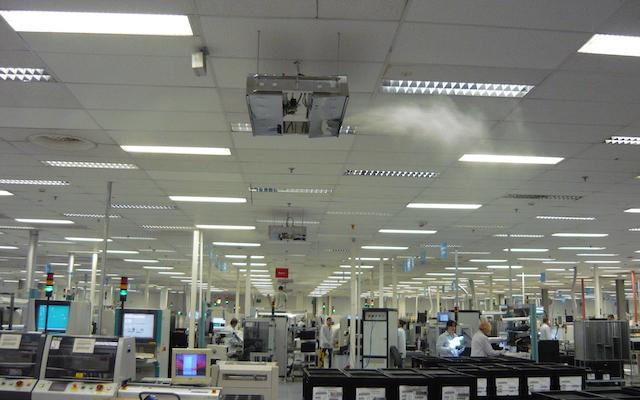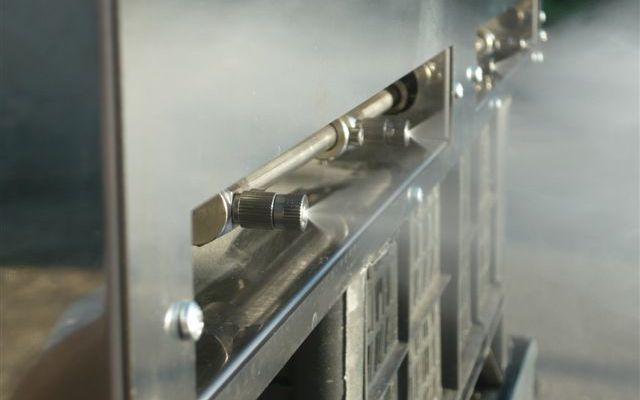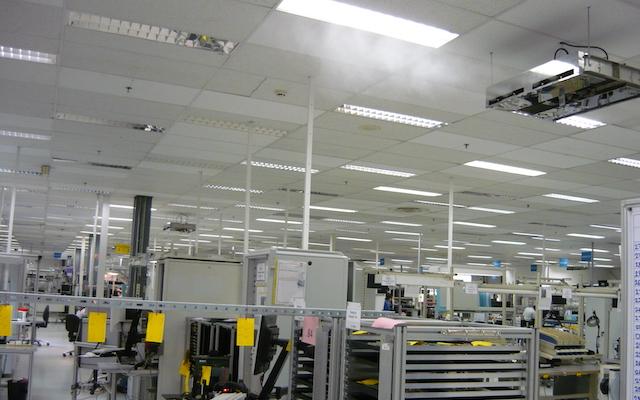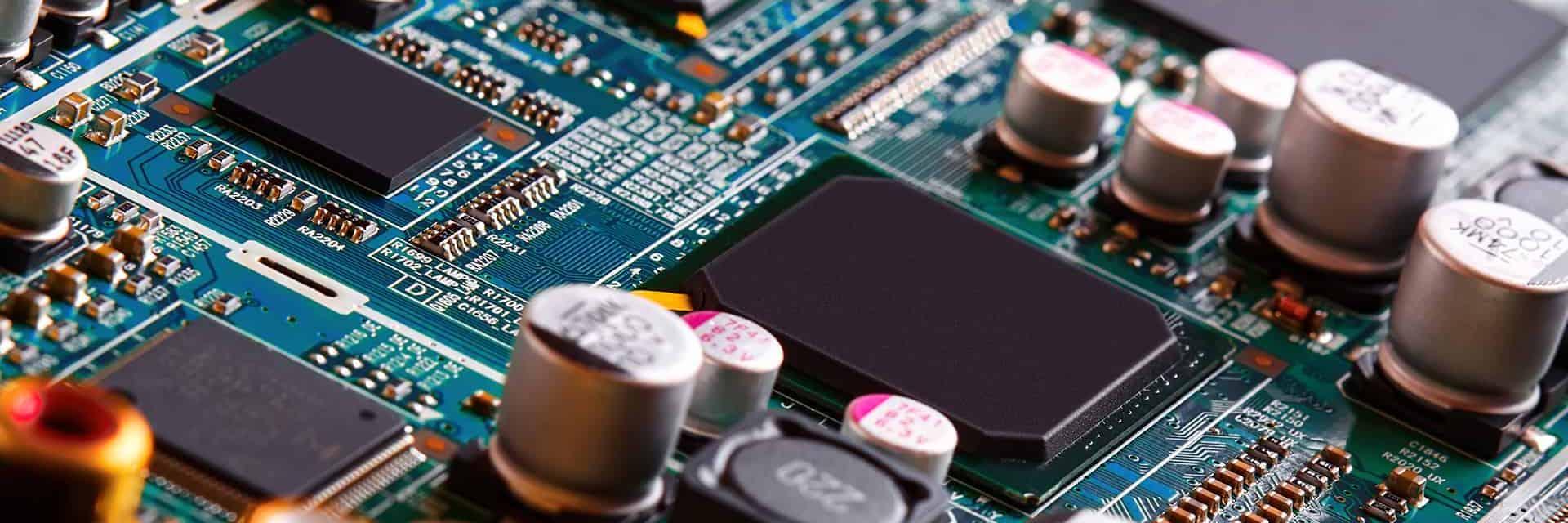Problem
In the electronics industry, low relative humidity increases the risk of electrostatic discharges, which can damage circuits and even production equipment (ESD protection).
Electronic devices, printed circuit boards, components and their production equipment and stored data are also highly sensitive to electrostatic discharge. Ensuring adequate humidity during their manufacturing processes is essential. Electrostatic discharge (ESD) is the sudden flow of current between two electrically charged objects caused by proximity. ESD occurs when objects with different charges come into close contact.
Traditionally, protection against this phenomenon has been provided by mechanical means, with the use of charge-dissipating clothing and accessories, but in many cases this does not provide sufficient protection. Many ESD events occur without a visible or audible spark. A person carrying a relatively small electrical charge often does not even detect the discharge, which may be sufficient to damage sensitive electronic components.
Controlled humidity
Continuous air exchange
Electrostatic discharge protection
Solution
These invisible forms of ESD can cause a direct failure in the device or affect the long-term reliability and performance of electronic devices. In many cases, the effects of ESD on individual electronic components may only become apparent during the product’s commissioning lifecycle.
Causes of build-up can include: friction between two materials causing recharging, e.g. walking on carpet, rubbing a plastic comb on dry hair or wearing synthetic fibre clothing, etc. Most electronics manufacturers try to protect against ESD by creating electrostatic protection areas, avoiding the use of materials that are prone to build-up, using earthing devices, but one of the most ideal methods to eliminate ESD is humidity control.
Above 40% relative humidity, the surface resistance of floors, carpets, table mats and other areas is greatly reduced. Humidifiers add moisture to the air, so the moisture in the air forms a thin protective layer on surfaces that acts as a natural conductor to dissipate electrical charges. When humidity drops below 40% RH, this protection is lost and normal worker activity causes objects to become charged with static electricity. This can cause discharges.
Benefits:
+ High precision process humidity control (+/- 2% )
+ Dust, odour, noxious substances absorption
+ Marginal gain, 2-3 C cooling effect in summer
+ Increase in human comfort
+ Remote control, monitoring, data storage for audio



Ask our colleague!
Case study:
Sanmina : Imre Jarfás : Operations Manager, ESD, Vapor Cooling, Air Purification, Energy Efficiency
“During the production of our electronic devices, in addition to avoiding electrostatic discharges (ESD), we also utilized the humidification system for supplementary cooling during the summer months, resulting in an average decrease of 2-3 degrees Celsius in the air temperature of the facilities. This led to significant savings in cooling energy costs.
An additional benefit of the humidification system’s operation is that the air in the facilities is much cleaner. Based on our over 3 years of trouble-free operation experience, we confidently recommend the system for applications where precise humidity control, reliable operation, and the possibility of remote monitoring via the Internet are important.”





